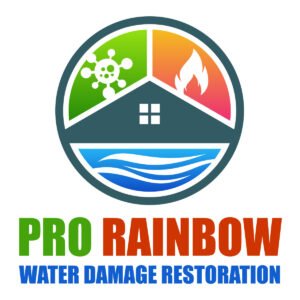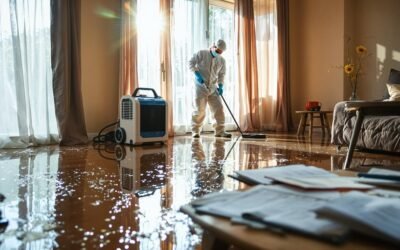FEMA can provide substantial financial aid for home repairs after a disaster, typically up to $34,000, depending on your specific needs and eligibility. This assistance covers crucial repairs, temporary housing, and replacing damaged personal property. You'll need to document your damages and losses thoroughly to improve your application's success. Expect a response within a few weeks after submitting your application, and verify your contact information stays updated. Prioritizing your repairs and researching local resources can help maximize your benefits. For a deeper understanding of the types of aid available and the application process, there's more to investigate.
Key Takeaways
- FEMA provides financial assistance for home repairs, with grants typically ranging up to $33,000 depending on the extent of damage and eligibility.
- The amount awarded is based on documented losses and the cost of necessary repairs to return the home to a safe condition.
- Applicants must demonstrate uninsurable losses or insufficient insurance coverage for home repairs to qualify for FEMA assistance.
- Expect a response regarding your application status within a few weeks, and be prepared to provide additional information if requested.
- Keep thorough documentation of damages, including receipts and photos, to maximize potential grant amounts for home repairs.
FEMA Assistance Overview
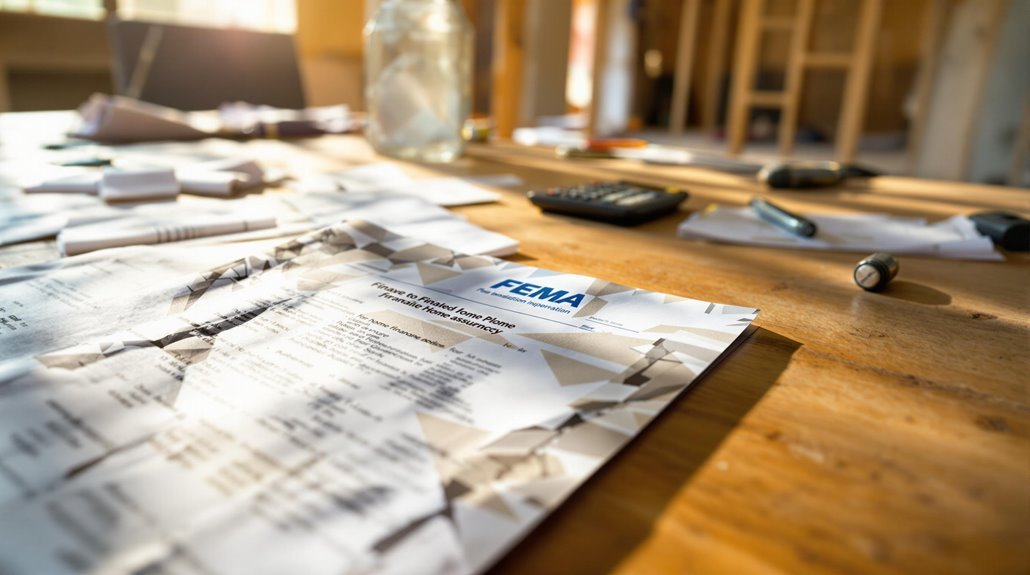
When disaster strikes, knowing you can turn to FEMA for assistance can provide some peace of mind. FEMA offers disaster relief to help you recover after a catastrophe, ensuring vital needs are met. Their funding sources include grants for temporary housing, home repairs, and other disaster-related expenses. This support is designed to ease the financial burden that often accompanies such distressing events. You can apply for assistance online or through designated centers, making it accessible when you need it most. Remember, you're not alone in this process; FEMA aims to guide you through each step, ensuring you understand the resources available to rebuild your life after loss. Take advantage of this lifeline to restore your home and well-being. Additionally, consider reaching out to water damage restoration services to address any immediate damage caused by the disaster.
Eligibility Requirements
To qualify for FEMA assistance, you must meet specific eligibility requirements that evaluate your situation after a disaster. First, you need to be a resident of an area covered by disaster declarations. This means your home must be in a designated disaster zone declared by the President. Furthermore, your losses must be directly related to the disaster, impacting your primary residence. You'll likewise need to demonstrate that you have uninsurable losses or that your insurance coverage is insufficient. FEMA eligibility often considers your income and resources, as assistance aims to help those in most need. Remember, documenting your damages and losses thoroughly will bolster your application and ease the assistance process. Additionally, consider reaching out to professionals for water damage restoration to help assess and address any damage effectively.
Types of Financial Aid
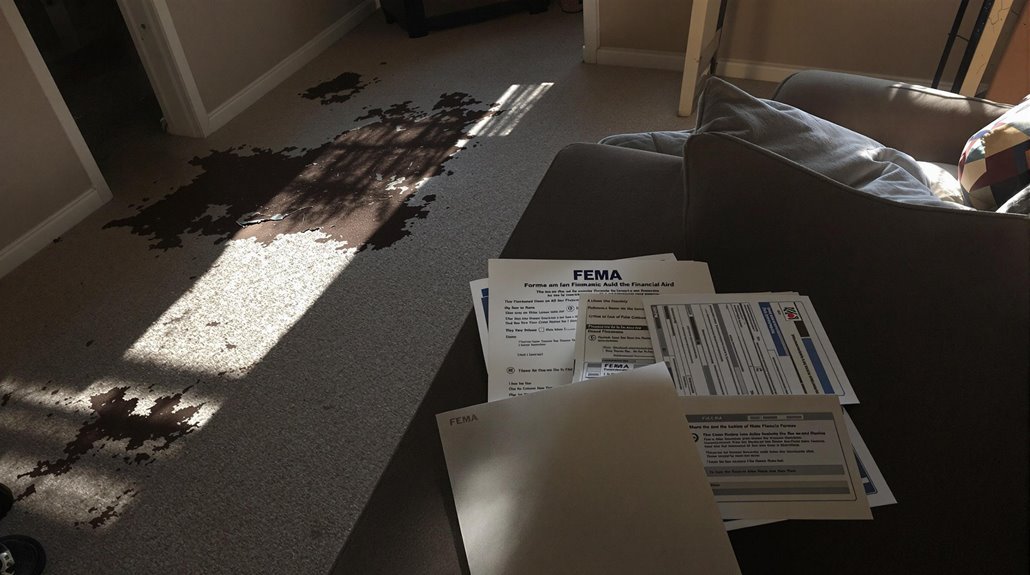
Once you've confirmed your eligibility for FEMA assistance, it's important to understand the various types of financial aid available to help with home repairs. FEMA offers several forms of disaster relief and financial assistance, including:
- Housing Assistance: Funds for temporary housing or repairs to make your home livable.
- Personal Property Assistance: Help with replacing crucial household items lost or damaged during the disaster.
- Other Needs Assistance: Coverage for medical, dental, or funeral expenses related to the disaster.
- Hazard Mitigation Assistance: Grants to help implement measures that reduce future disaster damage.
Understanding these options can guide you in steering through the recovery process and ensuring you receive the support you need.
Application Process
As you begin the application process for FEMA assistance, it's crucial to gather all necessary documentation and information to streamline your experience. Start by collecting your identification, proof of residence, and insurance information. These application tips can help you avoid delays. When you submit your application, you can expect to receive a response within a few weeks, so it's important to manage your timeline expectations. Keep your contact information up to date and check your email or FEMA account regularly for updates. If additional information is needed, respond promptly to keep the process moving. Remember, being organized and proactive can greatly improve your chances of receiving the assistance you need for home repairs.
Maximizing Your Benefits
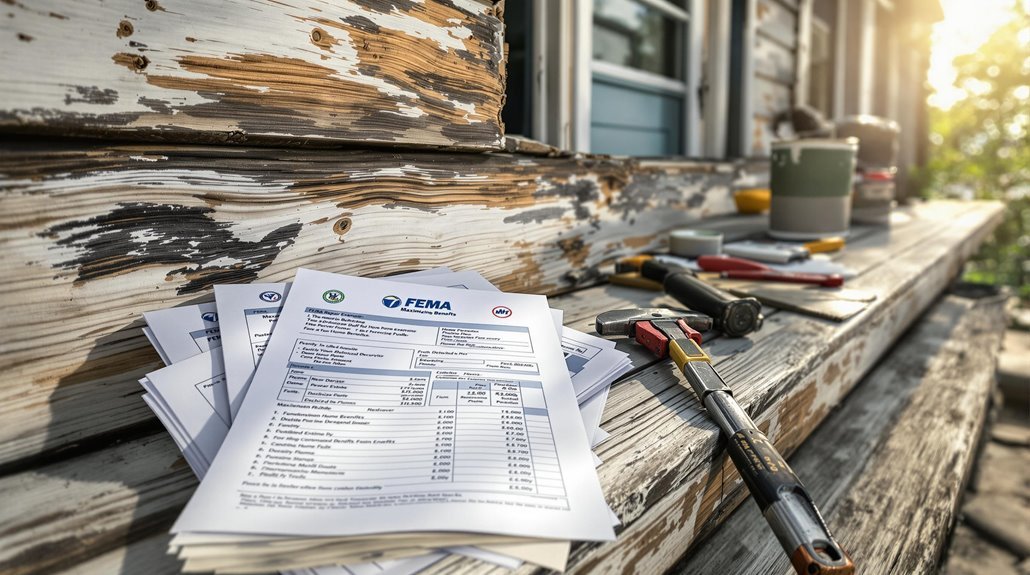
Receiving FEMA assistance is just the first step; understanding how to maximize your benefits can greatly impact the outcome of your home repairs. Benefit optimization involves smart planning and strategic action. Here are some repair strategies to reflect upon:
- Document Everything: Keep receipts, photos, and notes of all damage and repairs.
- Prioritize Crucial Repairs: Focus on fixing structural issues and safety hazards first.
- Research Local Resources: Look for additional grants or assistance programs in your area.
- Consult Professionals: Get advice from contractors or disaster recovery specialists for accurate estimates.
Conclusion
To summarize, while you might worry that FEMA's assistance won't cover all your repair costs, it's crucial to remember that even partial aid can make a significant difference. By understanding the eligibility requirements and types of financial aid available, you can navigate the application process more efficiently. Stay proactive and informed, and don't hesitate to reach out for help. With the right approach, you can maximize your benefits and get back on your feet after a disaster.
